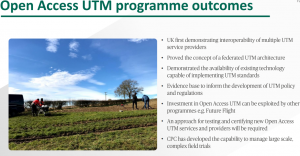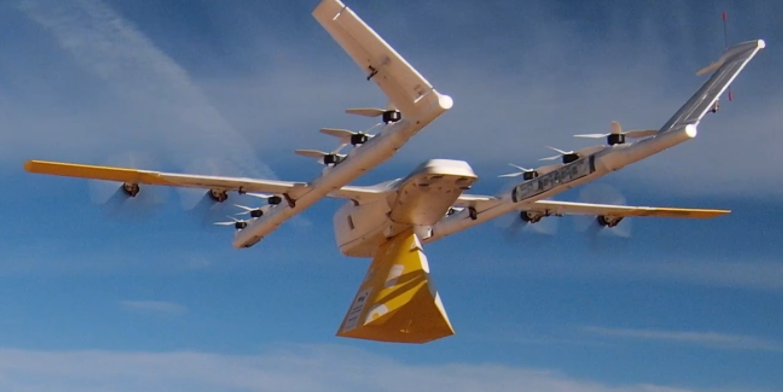By Jenny Beechener
“Development of a vision and a roadmap for lower airspace” has been added to the substantial review of the UK’s Airspace Modernisation Strategy (AMS) currently underway, said James Bell, UK Civil Aviation Authority (CAA) Acting Innovation Strategy Lead at the Connected Places Catapult webinar highlighting results from the Open Access UTM trial on 16 June 2021. “This was missing in the original 2018 modernisation strategy, and we expect to influence the AMS review in order to include greater recognition of Unmanned Traffic Management (UTM) and integration of new vehicles into our shared UK airspace.”
Anticipating the introduction of shared airspace, Innovate UK Future Flight Director Gary Gutts predicted this will happen “in some form” by 2023-24. Department for Transport Policy Team Lead David Lamb said this is ambitious but nevertheless achievable. “We will see pockets happening within this time frame, becoming more prolific as the technology develops,” added James Bell. The beyond visual line of sight (BVLOS) environment is the subject of further work, for example to establish a detect and avoid ecosystem. The CAA is working with manufacturers on how to implement secure-by-design principles to address cybersecurity.
James Bell outlined three streams of work by CAA in support of this effort taking place in the second half of 2021.
The first of these is strategic. As part of the joint CAA and Department for Transport (DfT) AMS, the CAA is developing an initial vision of UTM and aims to find “a new name for UTM in order to better reflect the future strategy”.
The second area of work is focused on safety. The CAA will undertake a regulatory gap analysis of the current regulatory frameworks at a high level. It will then look at the requirements that could benefit UTM from a regulatory standpoint and plans to use case studies to explore specific technical content.
Thirdly, the CAA is exploring the commercial considerations relating to UTM to understand regulatory requirements from an economic perspective and enable it to operate in the open market.
James Bell said this work will be accompanied by “calls for insight” by the CAA’s Innovation hub, inviting participation by third parties to support the research. These calls will be in addition to ongoing collaboration activity generated via the regulatory sandbox, workshops, and formal consultations being run by the CAA as part of the modernisation strategy review.
“Open Access UTM provides a really sensible and pragmatic first assumption for UK UTM implementation framework, and we will consider any recommendations that emerge from Catapult’s fantastic work,” said James Bell.
UK innovation incubator Connected Places Catapult developed the national UTM Open-Access UTM framework in collaboration with DfT, CAA and industry stakeholders, NATS, Altitude Angel, ANRA Technologies, Cranfield University, the Satellite Applications Catapult, Thales UK, WING, GE (AiRXOS), Collins Aerospace and Skylift. The three-year DfT-sponsored programme concluded live trials in the last six months to demonstrate how UTM could deliver air traffic management services in the future.
Among lessons learned, Altitude Angel Product Architect Rupert Benbrook said live field trials in an agricultural context showed that “technology can enable safe the dynamic management of airspace”. He called for development and adoption of standards to help accelerate integration.
ANRA Chief Architect David Murphy said ASTM UTM draft standards proved to be effective in establishing interoperability between UTM and service providers in an emergency response demonstration. However there remains a need for regulatory overlay of standards, for example to address data sharing sensitivities, strategic conflicts and operator notifications.
A windfarm inspection demonstration also showed successful application of evolving UTM standards in the UK specific context according to Collins Aerospace Innovation Center Lead Sean Camilleri.
Connected Places Catapult published its findings today and plans to set up a working group to broaden engagement and continue to evaluate results.

The presentations can be viewed here
(Image: Wing)
For more information visit:




